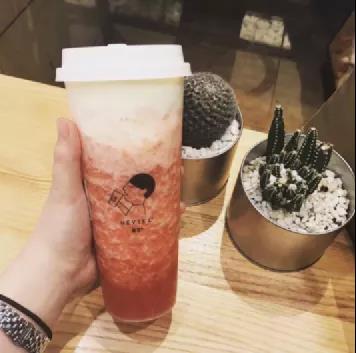The more smelly the hotter, see how snail noodles and durian have fun with sensory marketing!Today's headlines

The more "stinky" the more fire, what is the reason?
In the fifth batch of national intangible cultural heritage representative projects announced a few days ago, snail noodles and stinky tofu are both on the list.
The "2019 Taobao Food Big Data Report" shows that in 2019, a total of 28.4 million pieces of bagged snail powder were sold; data from the Liuzhou snail powder association shows that the output value of the Liuzhou snail powder industry reached 13.5 billion yuan in 2019, an increase of 193% year-on-year In 2020, affected by the epidemic, snail powder will continue to grow explosively. The output value in the first half of the year will reach 4.98 billion yuan, and the annual output value of bagged products will exceed 10 billion.
Similar to snail noodles, durian is also popular. This summer, "Durian Blind Boxes" are popular. Xiaohongshu searches for "Durian Blind Boxes" and there are 20,000+ notes. Douyin also launched a large number of durian blind boxes.
Why "the more smelly the fire"? Here, they use the same marketing technique, "sensory marketing" based on the sense of smell.
ONE
"Smelly" is the prelude to "True Fragrance"
Most of the stories about "smelly" foods such as snail noodles, durians, and stinky tofu on the Internet have a common routine-the law of true fragrance.
How repellent is in the front, and how fragrant it is to eat in the back, is a unified script for netizens to interpret this kind of food. Some jokes even attracted international friends. They "pinched their noses" to try these "wonderful" Chinese delicacies, and then came up with a reversal of "one-eating addiction", which aroused many people's attention. Many people know snail noodles from these jokes. Looking back a few years, snail noodles are not very popular in many provinces. Now, under the rendering of social networks, snail noodles have become a national delicacy.
The entrance of snail noodles to increase the nationality is "stinky", which arouses people's curiosity psychology, and then captures people's taste buds with the reversal of "from smelly to fragrant". This is actually a kind of scent marketing, and it is a reverse scent marketing, which contrasts fragrance with odor.
In the catering industry, it is not uncommon for restaurants to market by smell, such as the shredded bakery that we often encounter. Many people have noticed that whenever there is a shredded bakery on the side of a shopping mall or on the street, you can smell the sweetness of the bread after baking almost 100 meters away, but few people notice that this kind of stalls usually serve the bread. Exposed, some even put the bread-making machine in the front hall, so that the smell can be fully emitted. Facts have proved to be very effective, and a large number of customers of torn bread are "smelling the fragrance."

There is also a successful case of odor marketing among fruits-Sunshine Rose Grape. In the early content of the Sunshine Rose Grape (Hyun) Pu (rich), the Sunshine Rose grape has the smell of rose and sweet-scented osmanthus relative to the sweetness. Because sweet grapes are often present, but grapes with their own floral fragrance are not often present.
"Smell" makes these foods clearly recognizable. Applying this logic to marketing, smell, and even other sense organs, can become the content carrier of marketing.
TWO
"Elementary" sensory marketing to make products
Sensory marketing, that is, companies use the five human senses-sight, smell, taste, hearing and touch to influence consumers to achieve the purpose of marketing. The catering industry is an industry that is extremely suitable for sensory marketing, and many restaurants are already using sensory marketing techniques.
The catering industry always pays attention to color, fragrance and taste. In fact, this is a product design approach that originates from the senses. Starting from the five senses, building a restaurant's dining space and service system is "primary" sensory marketing.
In addition to the core of taste and the sense of smell mentioned above, smart restaurants will also add sight, hearing, and touch to form an “immersive” experience of “five senses in one”.
1. Vision
Vision affects taste.
In the catering industry, the creation of vision is mainly reflected in two directions: product vision and scene vision.
In terms of product vision, new tea drinks have always been "eye-catching." For example, the "gradation" that new tea production loves, one is to highlight the fullness of "multiple ingredients" visually, and the other is to convey the visual beauty gradually.
Because of its beautiful gradation, Hey Tea has become a "selfie artifact" in the hands of young people.
In the past two years, the catering industry has set off a vigorous scene revolution. Behind this revolution is the awakening of visual marketing awareness in the catering industry. The typical case of Shu Daxia Hot Pot moved the "Wulin Jianghu" scene into the restaurant, opening a completely immersive scene experience, and has countless fans for it.
Vision has become the second key element for food and beverage products to convey a sense of value in addition to taste.
2. Hearing
The creation of hearing in the catering industry is a "polarization" behavior, which is weakening the atmosphere while strengthening the atmosphere.
Why are there two different directions? Because more and more customers want to have a relatively private and undisturbed dining experience, this requires restaurants to reduce the noise of the restaurant through cubicles and use noise reduction materials, that is, to weaken the atmosphere of people dining in public places. On the other hand, some restaurants hope to use music to enhance the restaurant's elegant or cheerful dining atmosphere. For example, in western restaurants, theme restaurants, and bars, music may also become their characteristic. Walnut is a restaurant that makes the music scene a special label. The cultural atmosphere centered on music has formed a barrier to competition in Walnut.
3. Touch
Compared with other senses, touch is a sensory sensation that is easily overlooked in the catering industry, but it is hidden in many details of the restaurant and affects the overall experience of customers.
First of all, all the things that customers may touch in the restaurant must be clean, such as door handles, toilet faucets, coasters, etc., for customers to "dare to touch"; second, some things such as backrest pillows, kettles and cups, etc. The right degree of hardness and temperature is the place where the restaurant embodies the humanized service, which allows the restaurant to enhance the texture of the service in the details.

THREE
"Advanced" sensory marketing for drainage
Using "smelly" to arouse attention, color to arouse appetite, and music to express culture, the catering industry is an industry "good at" sensory marketing. "Elementary" sensory marketing can help restaurants to make consumer experience user-oriented, and "advanced" sensory marketing will become a great help for restaurants to attract traffic.
Take a look at how successful they use the "five senses" to successfully attract traffic.
Linguistic and concretization of taste
"Faced with the hardship of life, how can we be soft, lick our fingers, wipe our lips, bones, and take a bite..." This is the copy in the documentary "A String of Life". The words give unlimited imagination space to the taste. This imagination is far stronger than the impact of a bite. This is also one of the key factors for the success of "China on the Tip of the Tongue" to "carry goods" of various special cuisines.
Many restaurants have noticed the charm of text in the sense of taste. For example, many stores will post pictures of signature dishes in conspicuous positions with text descriptions; for example, some of the drinks contain "bobo crisp" and "glutinous jiji". The name of the word is actually a concrete and interesting expression of taste to attract customers.
Visual symbolization and theming
We are now talking about the IPization of catering brands, and the predecessor of IPization is visual symbolization, that is, the memory points of the brand are formed through specific and unified symbols and images. Because compared to long-form texts and pictures with different styles, symbols and specific images are easier to form long and clear memories. This is also the reason why Xibei Younian Village has changed its brand name and logo several times. It hopes that through the brand name and image visual system, it can not only express the characteristics of the brand, but also easily form the brand label.
In addition to the symbolization of the visual system, the restaurant scenes have also begun to become "themed", that is, the theme image and brand characteristics of the restaurant are decorated with a unified style, so that it is easier for customers to deepen the brand impression.
The sense of smell is interesting and clear
Snail noodles and durian use "smelly" to make a fuss, which is a way of expressing interest in the sense of smell. In addition to fun, more restaurants use the olfactory method.
Set up open stalls in the restaurant, and place some meals that are not too complicated to produce but have obvious smell and visual temptation in the open stalls. This is equivalent to showing the products in a way that customers like and see, and the effect of guiding consumption is better. .
Auditory entertainment and customization
The music in themed restaurants and bars is mostly used to enhance the entertainment atmosphere. In addition to entertainment, more and more restaurants are beginning to use "hearing" to express the temperature of the restaurant. For example, customers can "order a song" or even customize a playlist for customers with special ceremonial needs. These make "hearing" an entrance to enhance the sense of service value.
Tactile detail, humane
What is the ratio of offline consumption to online consumption? A very important point is the tactile experience. There are things that can be "touched" offline. How to make the "touch" experience the ultimate, start with details and humanization.
The reason why Pang Donglai is called the god of the retail industry is due to its meticulous and user-friendly service. For another example, during the epidemic period, disinfection wipes at the entrance and the elimination of public facilities have also become a major direction for restaurants to attract consumption.
The so-called experience is actually people's sensory feelings. Therefore, sensory marketing has never been a new topic, but a "standard configuration" that accompanies the operation of various restaurants. It’s just that some restaurants have made sensory marketing a powerful tool for attracting traffic. They have made dining a ritual, interactive, and entertaining thing by emphasizing the "five senses"; some restaurants still stay basic The sensory expressions, such as delicious, beautiful, etc., in this way, the gap is widened.
Digging deep into sensory marketing is the channel to help restaurants gain obvious advantages. Recommend Mr. He Jiu's "New Food and Beverage Marketing Force" book, more ways and methods of food and beverage marketing, there is always one that suits you.
免责声明:1.餐饮界遵循行业规范,转载的稿件都会明确标注作者和来源;2.餐饮界的原创文章,请转载时务必注明文章作者和"来源:餐饮界www.canyinj.com",不尊重原创的行为餐饮界或将追究责任;3.投稿请加小编微信toutiaoxiansheng或QQ1499596415。4.餐饮界提供的资料部分来源网络,仅供用户免费查阅,但我们无法确保信息的完整性、即时性和有效性,若网站在使用过程中产生的侵权、延误、不准确、错误和遗漏等问题,请及时联系处理,我们不承担任何责任。
 扫码关注餐饮界微信号
扫码关注餐饮界微信号


 Media
Media


